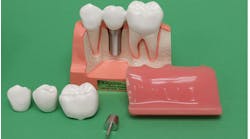You have your mission statement to keep you on track. You have the tools in place to build, enhance, or change the practice that you have or desire. You are working on increasing your skill levels with many different procedures. You have created a checklist to track your progress. But the real problem for many is how you communicate with your staff and patients. We have all heard that “we were given two ears and one mouth for a reason.” How we communicate can make all the difference in our lives and the lives of the people around us.
Are you soft-spoken or aggressive, outgoing or introverted? What about your patients’ style of communication? How much time have you spent with them to get to know them? Think about the patient who has been up all night with a terrible toothache, and this is the first time meeting them. How can you best communicate with them to help them as you were trained to do? It comes down to communication.
You might also be interested in reading: Patient personalities: Making the connection
Transactional analysis (TA) is a technique for communication developed by Eric Berne, a Canadian psychiatrist and psychoanalyst, in the late 1950s. His basic beliefs were that people generally have the ability to think for themselves and that communication should be free and open. He also believed that people have the ability to change. He taught that communication operates on three different levels: the parent, adult, and child. I find this very useful when speaking with people, when trying to teach, trying to learn, and trying to do things in a better way. The model is very simple.
How we communicate is dictated by whom we are communicating with and by the information we want them to understand. When discussing dentistry, we must have an environment that is comfortable and use words that have meaning for the person we are speaking with. As dentists, we may think people know what a crown is, but often they do not. We need to use terms that a child can understand.
I do dentistry for many dentists, and their knowledge of dentistry is certainly great. But we all are at different levels in our dental career and knowledge. If you speak to me about orthodontics, I will be totally lost. In the TA model, the parent has rules, judgment, decisions, counsel, and caring, and can issue punishment. The adult has lots of information, facts, and no emotion. The child is playful, creative, and can be obedient and compliant or can display rebellion.
Dentistry requires great skill and great communication. Poor communication creates misunderstandings and conflict that will result in unhappy people. We also need to back up our communication with writing. People often say that they understand, but in fact they do not understand or are too embarrassed to say that they do not understand. They may also forget what you said.
Visual images are also important because some people understand pictures more than words. As the saying goes, “A picture is worth a thousand words.” Zig Ziglar used a yellow legal pad and called it the “talking pad.”1 When I am presenting a treatment plan, I always use a pad of paper. I might say something like, “Mrs. Smith, you need 10 crowns, and this is what a crown looks like.” (I then draw a tooth and make an outline of a crown over the tooth.) “Each crown costs X and the total will be X.”
You are writing facts down and the patient can see it. This is very powerful because it communicates in both words and pictures, and you are sitting side by side with the patient, having an adult conversation. Never speak of important matters with the patient lying down. The supine position puts the patient in an uncomfortable childlike position and can make it difficult for them to make an informed decision.
The interactions that you have with others set the tone of your learning experiences and communication experiences. Effective communication with patients, staff, and others begins with really listening, and then making others comfortable and speaking at the appropriate level.
Editor's note: This article appeared in the April 2023 print edition of Dental Economics magazine. Dentists in North America are eligible for a complimentary print subscription. Sign up here.
Reference
The talking pad. Seth’s blog. Aug. 19, 2009. https://seths.blog/2009/08/the-talking-pad/






